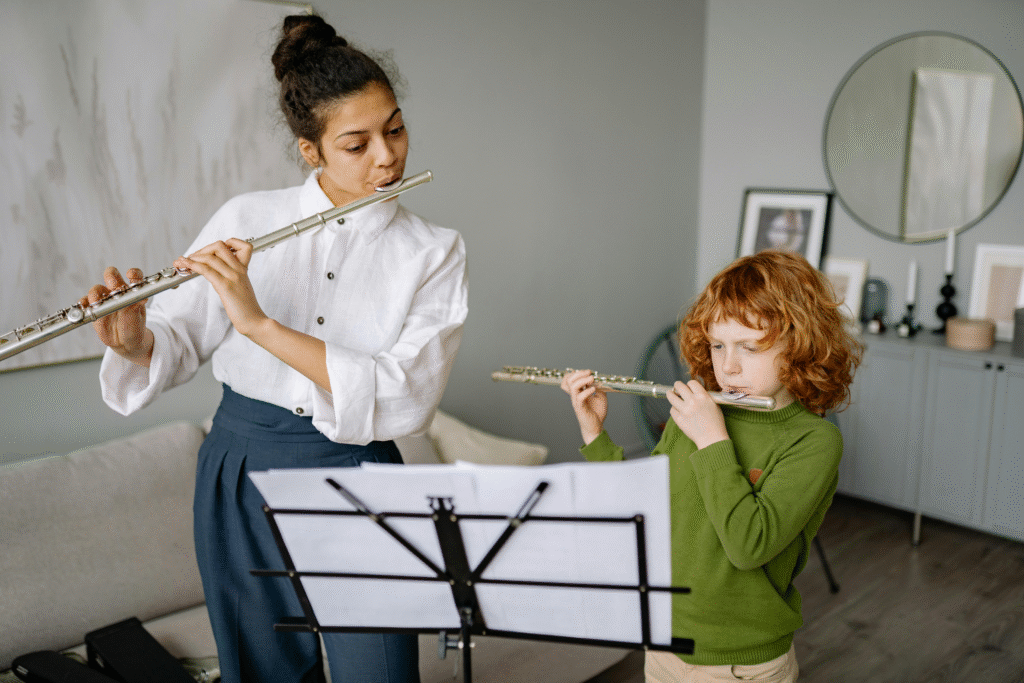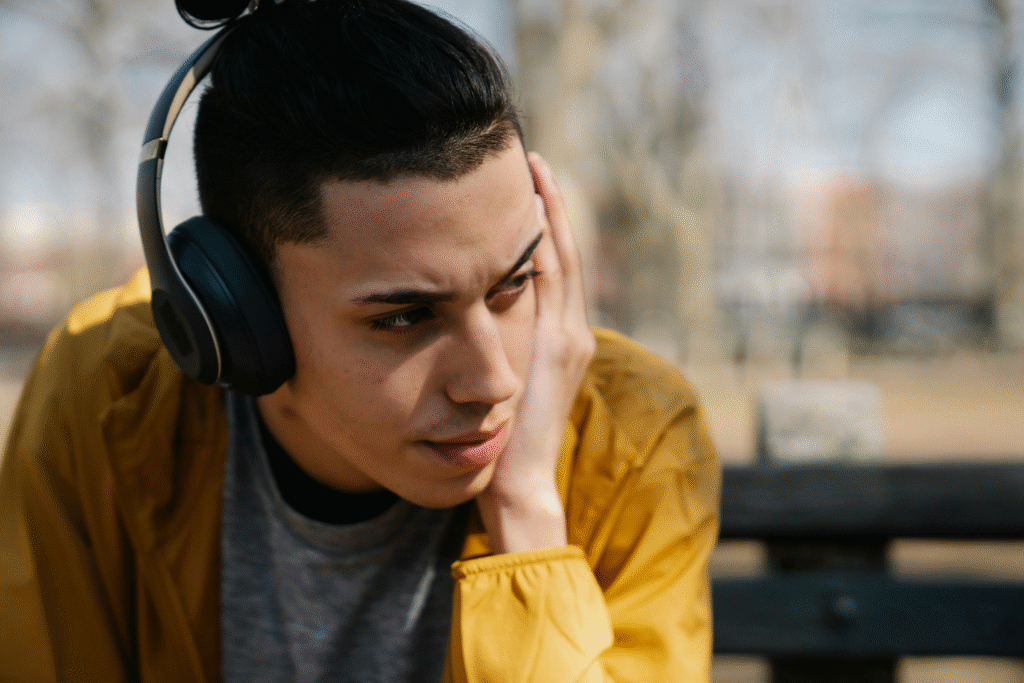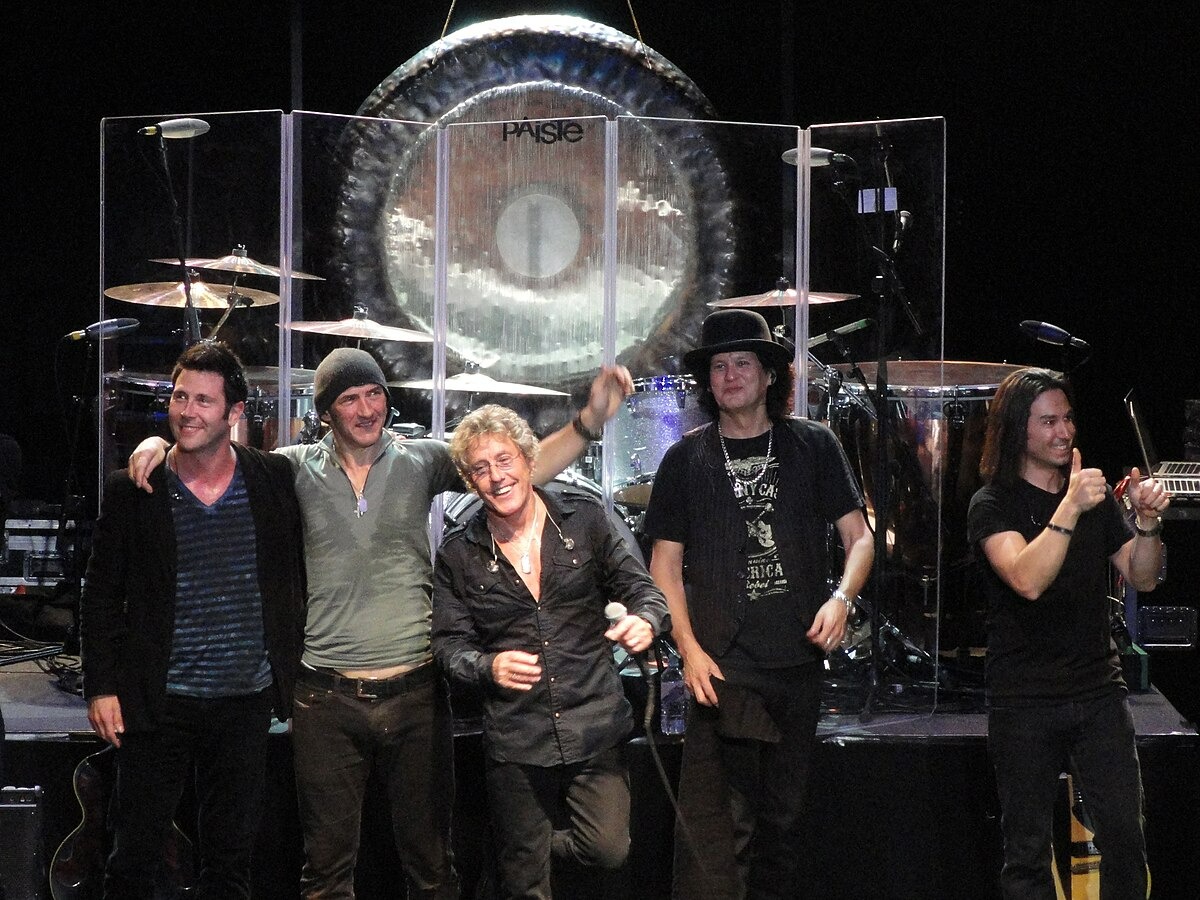
Chasing the perfect sound often leads down expensive rabbit holes. You don’t need $3000 headphones or vintage tube amps to revolutionize your musical experience. The real transformation happens through small, intentional habits that train your ears and deepen your connection to music. These evidence-backed practices work whether you’re streaming through AirPods or spinning vinyl on a high-end turntable.
10. Double Inhale Breathing for Concert Anxiety

Take your headphones to the woods and experience music’s ultimate collaboration with nature. Research from the Japan’s Forest Therapy Society shows forest environments naturally enhance your parasympathetic nervous system—the same relaxation response that makes certain albums feel transcendent.
Producer Brian Eno has long championed ambient listening in natural settings, understanding what science now proves: trees release compounds that reduce stress hormones while you listen. Your brain processes music differently in natural acoustics, creating soundscapes no Abbey Road engineer could replicate.
9. Sunlight Before Streaming

Morning light exposure before diving into your daily playlist sets your circadian rhythm for optimal listening. Stanford neuroscientist Andrew Huberman‘s research shows sunlight triggers serotonin production, priming your brain for emotional music reception.
Five minutes of natural light beats any $200 Philips Hue mood lighting setup marketed to audiophiles. Your ears become more sensitive to dynamic range and tonal nuances—something no algorithm can optimize for you.
8. Happy Ears, Happy Brain: Audio Nutrition

Just as your gut affects your mood, your audio diet shapes musical perception. Dr. Daniel Levitin‘s neuroscience research at McGill University confirms that diverse listening maintains healthy neural pathways—your brain literally rewires based on musical exposure.
Avoid the sonic equivalent of processed food: overly compressed Spotify streams and algorithmic echo chambers that make every song sound like a McDonald’s Happy Meal. Mix high-fidelity recordings with lo-fi gems, because authenticity trumps pristine production every time.
7. Resonance Breathing: Four In, Six Out While Listening

Synchronize your breathing with your music for deeper emotional connection. Heart Rate Variability studies from the HeartMath Institute show that controlled breathing patterns enhance musical perception—inhale for four beats, exhale for six while listening to ambient tracks.
This activates your parasympathetic nervous system, allowing music to penetrate deeper than those “critical listening” sessions audiophiles obsess over. Your heart rate syncs with tempo changes, creating physical resonance that no $5,000 tube amp can manufacture.
6. Deep Sleep: Resetting Your Audio Receptors

Quality sleep resets your auditory processing centers overnight. Sleep researcher Dr. Matthew Walker‘s studies at UC Berkeley show that delta wave sleep clears accumulated neural fatigue—including the audio overwhelm from daily noise pollution.
Avoid stimulating music before bed; those late-night headphone sessions disrupt neural recovery more than any vinyl purist wants to admit. Your frequency discrimination sharpens during sleep, making morning listening sessions feel like upgrading from Beats to Sennheisers.
5. One-Touch Music Management

Organize your music library like producer Rick Rubin organizes a session—decisively and without clutter. Cognitive load research from Stanford shows that decision fatigue kills creativity; if discovering a new artist takes less than two minutes, explore immediately.
Delete songs that no longer serve your taste evolution, because hoarding mediocre tracks is the musical equivalent of keeping every rough demo. This reduces choice paralysis better than any Spotify algorithm claiming to “know your taste.”
4. Embrace Musical Boredom Hours

Schedule time for undirected listening without multitasking. No scrolling, no working—just you and the music in intentional boredom.
This allows deeper pattern recognition in complex compositions. Your brain processes musical relationships without competing stimuli. Hidden details emerge from familiar albums during these focused listening sessions.
3. Chunking Down Music Goals

Break massive musical exploration into manageable listening goals. Instead of “discover jazz,” aim for “listen to one Miles Davis album this week.”
Create visual progress charts for genre exploration or instrument learning. Small musical victories build momentum toward broader taste expansion. This systematic approach prevents overwhelming choice paralysis in streaming libraries.
2. Move It or Lose It: Music and Motion

Sedentary listening limits music’s physical impact on your body. Ethnomusicologist research from Harvard shows music evolved with movement—dancing, marching, working rhythms that engage your entire nervous system, not just your eardrums.
Stand while listening to upbeat tracks instead of slouching in that expensive Herman Miller chair. Music was never meant to be consumed like a Netflix binge; embodied listening creates deeper neural pathways than any passive audiophile worship session.
1. Active Listening Practice

Train your ears like athletes train muscles through deliberate practice sessions. Audio engineer Bob Power, who’s worked with everyone from A Tribe Called Quest to Erykah Badu, advocates focusing on single elements—following bass lines, counting percussion layers, tracking vocal harmonies.
This builds auditory discrimination that transfers to all future listening, unlike those $400 “reference grade” headphones that promise instant clarity. Your brain learns to parse complex mixes automatically, making previously muddy productions crystal clear through practiced attention. Here are even more tips from professional musicians can further enhance your listening experience.





















